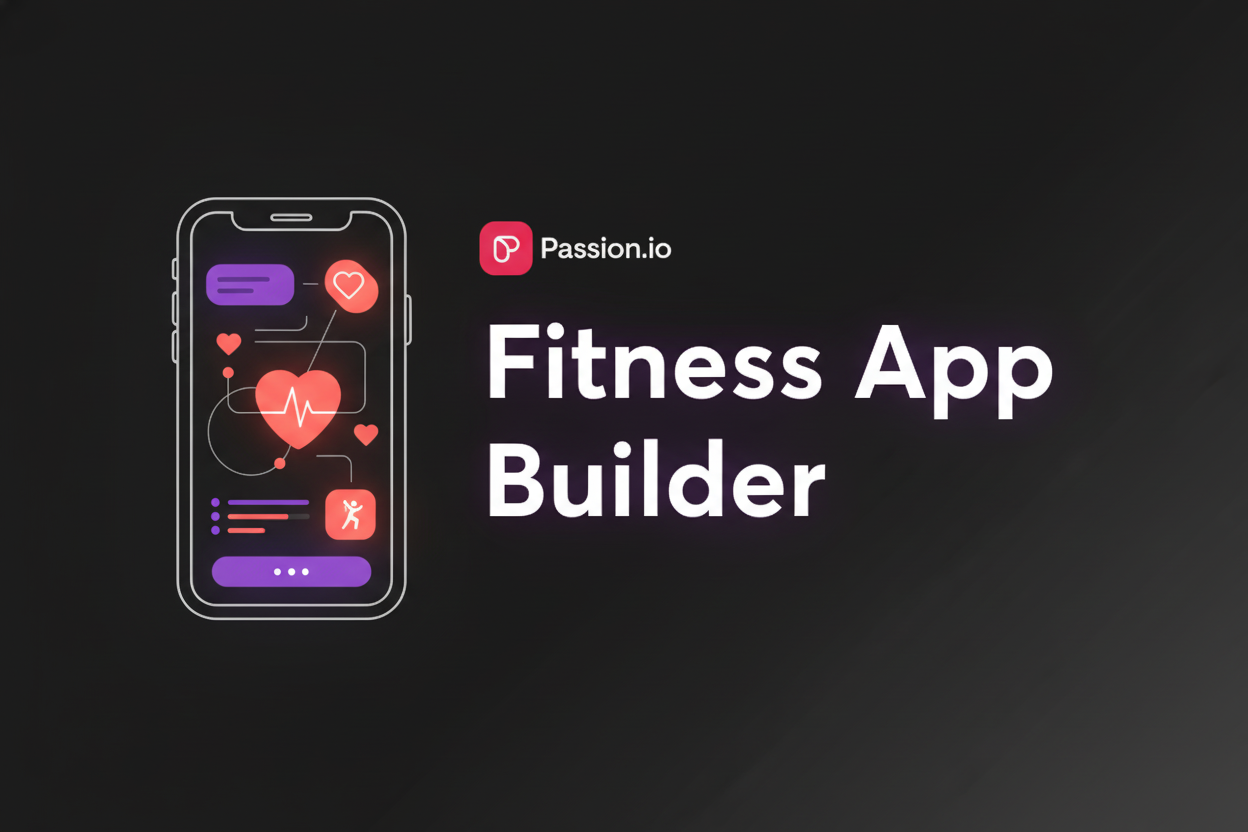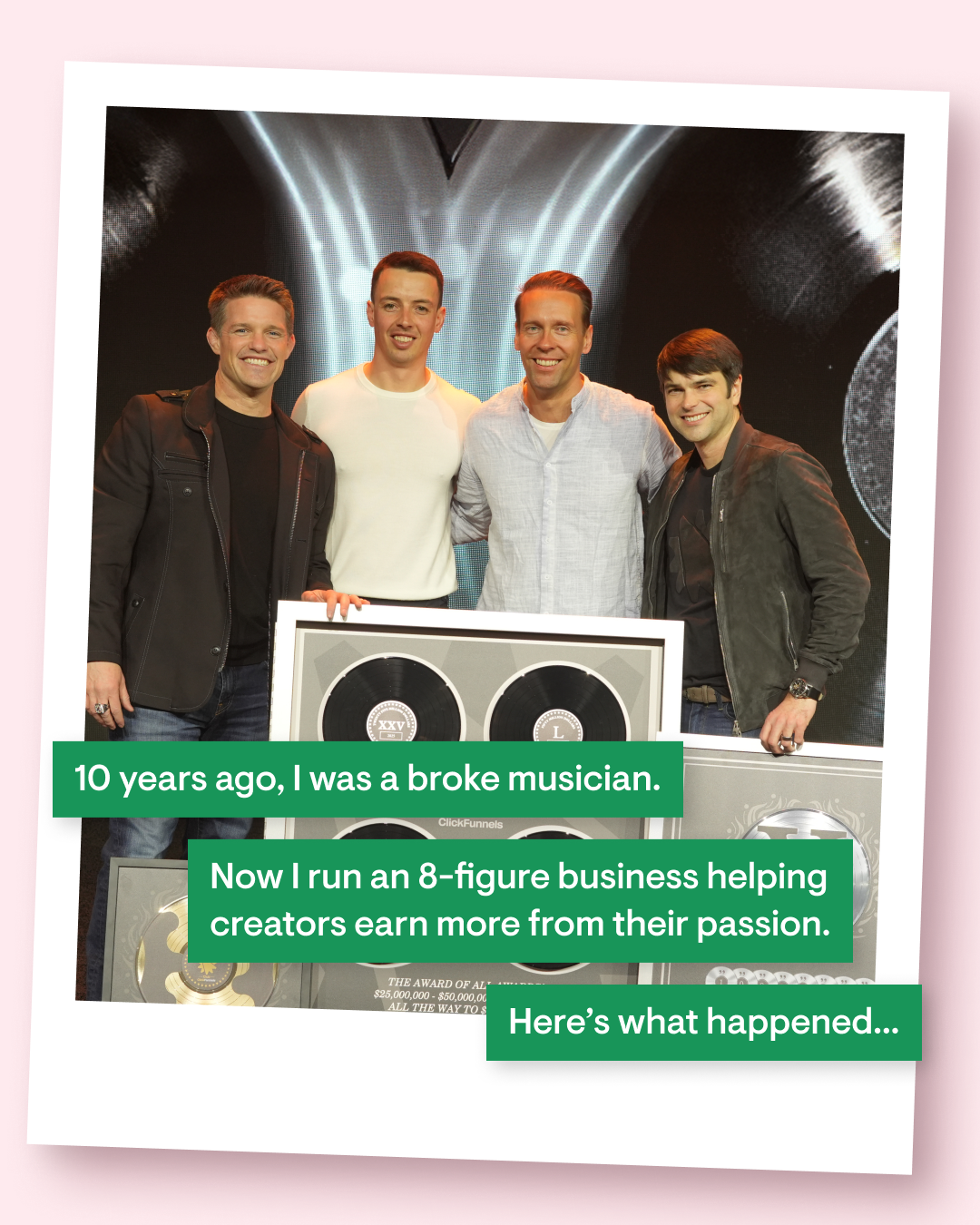Updated 13th October, 2025
If you coach online and want predictable recurring revenue, you need your app on your clients phones. Email opens are inconsistent. Social reach is rented land. Push notifications and a mobile-first community change completion, retention, and renewals.
This guide compares Passion.io with leading alternatives so you can pick the right path for a branded app, engaged community, and steady subscriptions.
Snaphot: Top Passion alternatives for your creator business
- Passion: Branded iOS and Android plus web for courses and community, with push, offline, and subscriptions. No code and go-to-market training. See the features overview.
- Kajabi: Web-first all-in-one with site, email, funnels, and courses.
- Mighty Networks. Community-first platform with memberships and courses.
- Movement.so: Flexible community and course spaces with clean design.
- ClickFunnels 2.0: Funnel and checkout engine for launches and upsells. Delivery is web-centric.
For a head-to-head on mobile delivery versus web-first stacks, watch a 2025 video comparison by Mike's Guides.
Why seek Passion alternatives? Understanding creator needs
You are not just hosting content. You want higher completion, a tighter community, and steady subscriptions without hiring developers. That points to a real mobile app with push nudges, in-app community, and clear payment paths.
Passion's strengths: Native apps and no-code power
- True branded iOS and Android apps plus web: Push notifications, offline content, and in-app community as core experiences. Review the features overview.
- Flexible monetization on web and mobile: Subscriptions, one-time, freemium, PassionPayments for web, and in-app purchases for mobile are covered on the app monetization page.
- Training and playbooks: Creators repeatedly call out the value of the training and launch guidance in a G2 review by Emmely C..
- Case-backed outcomes across fitness, arts, and coaching: See the program results highlighted on the case studies hub.
"Passion makes building your own e-learning app fast, simple, and stress-free." - Rob M. on G2
"They lay it out clearly and are available for support. The platform is easy to use with clear directions on what to do next." - Michele D. P. on G2
Key criteria for choosing a Passion alternative
If you coach, train, or run paid communities, use these criteria to pick your stack.
- Native mobile app capabilities: Prioritize a real branded iOS and Android app over web-only delivery. Push and offline access drive logins and completion. Multiple industry rundowns show push often outperforms email for re-engagement, such as the analysis by PushEngage.
- Monetization flexibility and ownership: Support subscriptions, one-time, and freemium. Offer both web checkout and IAP to balance margin and convenience.
- Community engagement features: Channels, DMs, challenges, progress tracking, and polls drive habit loops and retention in fitness and wellness.
- Total cost of ownership and transparency: Add platform plan, payment fees, Apple and Google developer programs, IAP percentages, and migration time. Model 1–3 years.
- Ease of use and App Store support: Look for a no-code builder with templates, video hosting, and clear App Store submission steps. Submission support matters if you are non-technical.
Checklist: key decision criteria
- Platform offers a real branded iOS and Android app.
- Push notifications and in-app community are included.
- Web checkout and IAP both supported with clear fees.
- App Store submission support and timelines documented.
- Pricing, quotas, and fees transparent in writing.
- Templates, training, and examples fit your niche.
Top Passion alternatives: A detailed comparison
These platforms are credible. Your best fit depends on whether mobile engagement, funnel depth, or web marketing is your next constraint.
Kajabi: The all-in-one business hub
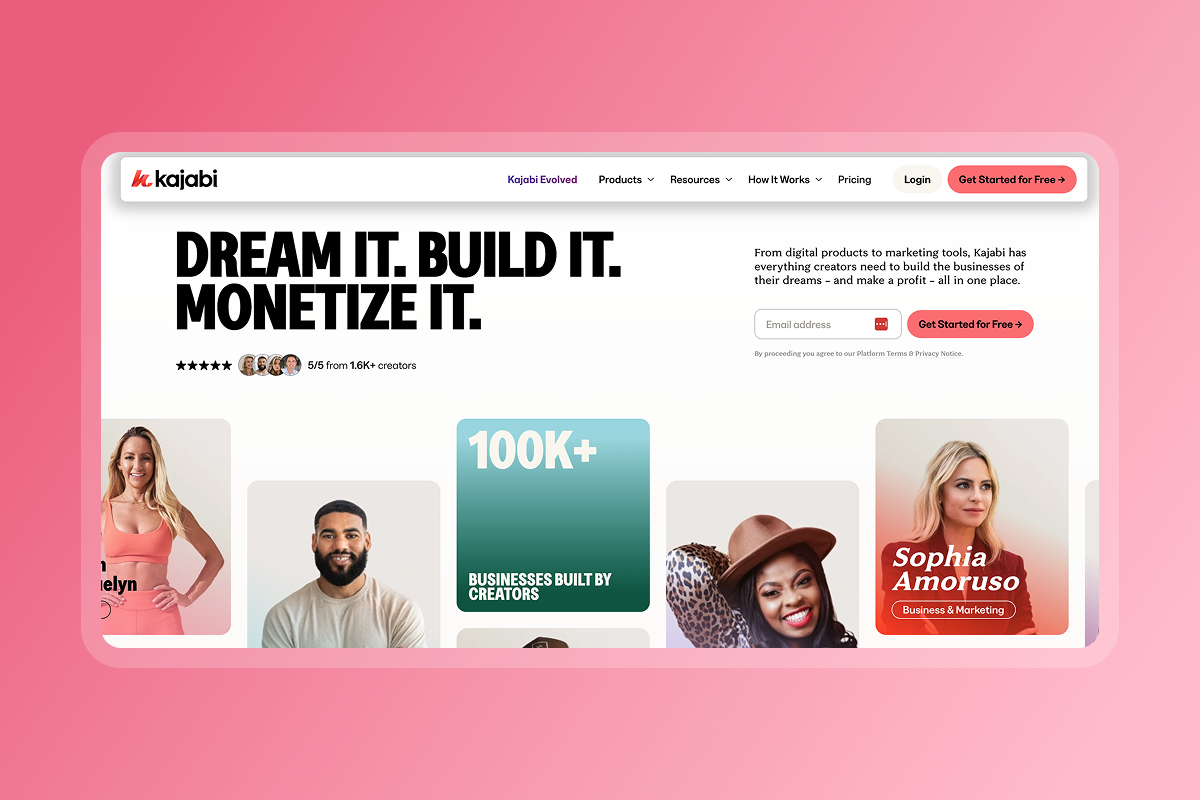
Kajabi brings websites, email, automations, and courses into a single web-first stack. Creators often choose it for the integrated marketing suite and ease of use. Users call out the all-in-one experience and responsive support, which helps during busy launches. One review sums it up as easy to implement and broad in scope in a G2 review.
- Strengths: Web funnels, pages, email, offers, and a mature course builder. Strong when your playbook is webinars, email, and evergreen content.
- Trade-offs to check: If you need a fully branded native mobile app with push and offline by default, validate mobile delivery. Many teams pair Kajabi for marketing with a mobile-first delivery platform.
- Fit: Course businesses that prioritize web funnels and a central site.
Mighty Networks: Community-first approach
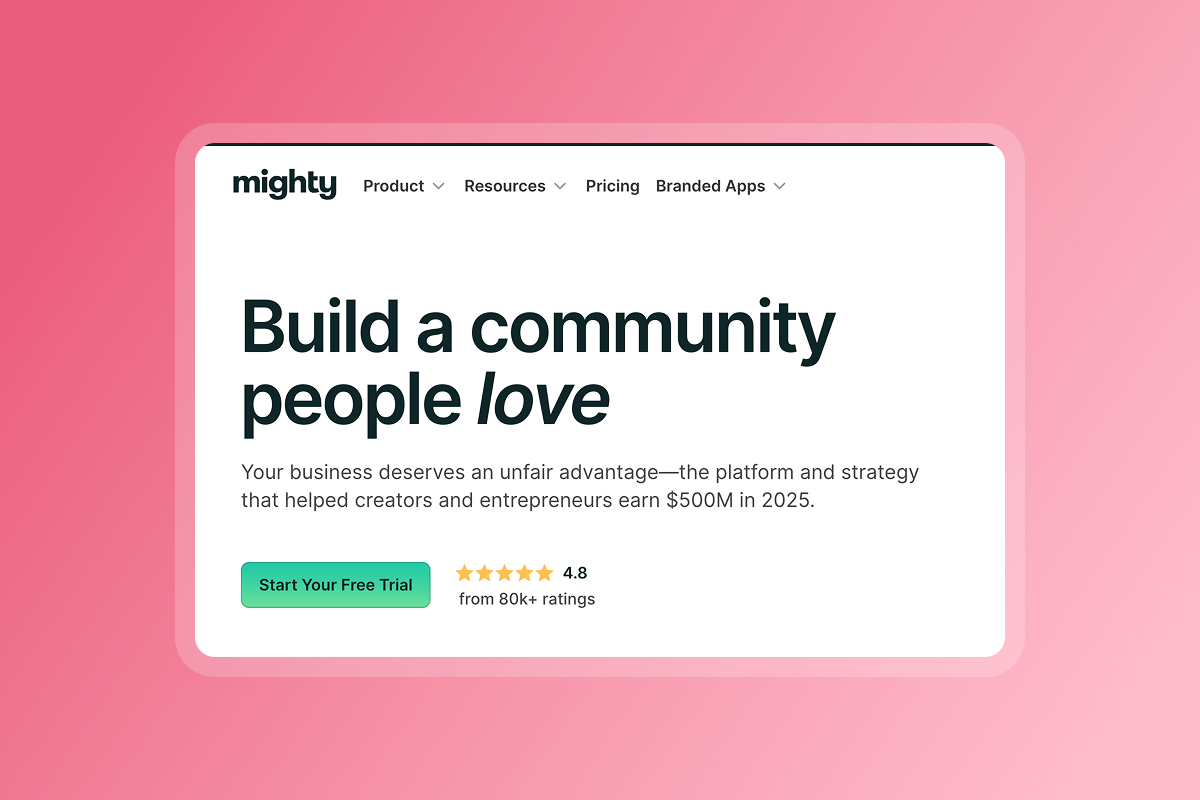
Mighty Networks focuses on community engagement and member-led interaction. Reviewers highlight landing pages, promos, and the ability to charge for access. One creator notes the business focus and integrated structure in a G2 review.
- Strengths: Community channels, events, discovery, and built-in monetization for memberships and courses.
- Trade-offs to check: If branded native mobile is your top priority, review mobile options and which tiers apply.
- Fit: Niche community builders who want deep member features and can accept a longer path to a branded mobile app.
Movement.so: Customization and community for coaches
.png)
Movement is known among coaches for clean design and flexible community spaces.
- Strengths: Clean UX, flexible community structure, and course delivery that supports coaching formats.
- Trade-offs to check: Confirm branded native mobile app availability and any App Store submission support if mobile is essential to your audience.
- Fit: Coaching communities that prize UX customization over a native mobile launch timeline.
ClickFunnels 2.0: Marketing and sales funnels
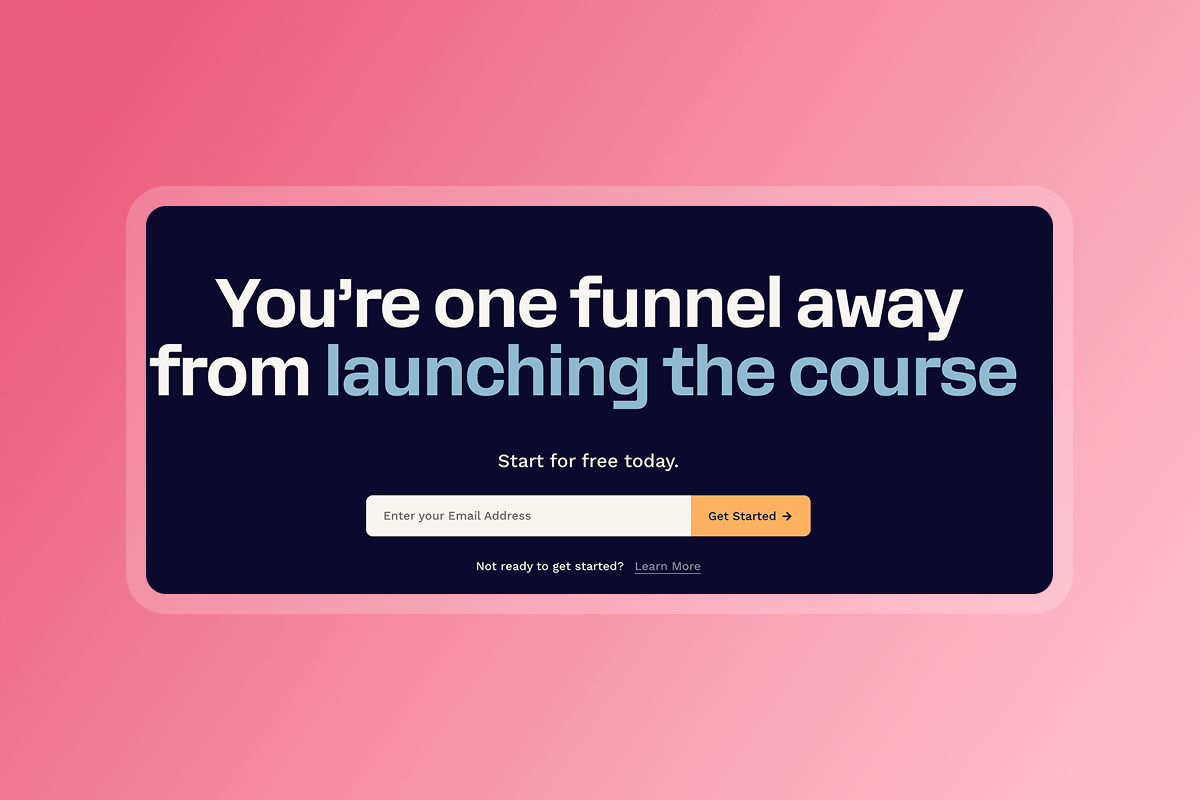
ClickFunnels 2.0 emphasizes funnels, offers, and checkout flows. It is web-centric and shines for launches that need rapid testing across pages and order bumps.
- Strengths: Conversion-driven funnels, split tests, and upsell ladders. Good as a front-end engine for acquisition.
- Trade-offs to check: Delivery for courses and community is web-first. If your students need a native app with push and offline, consider pairing ClickFunnels with a mobile delivery platform.
- Fit: Creators who run paid challenges, tripwires, and upsells, and who accept web-first delivery.
SchoolMaker: Blended learning and coaching
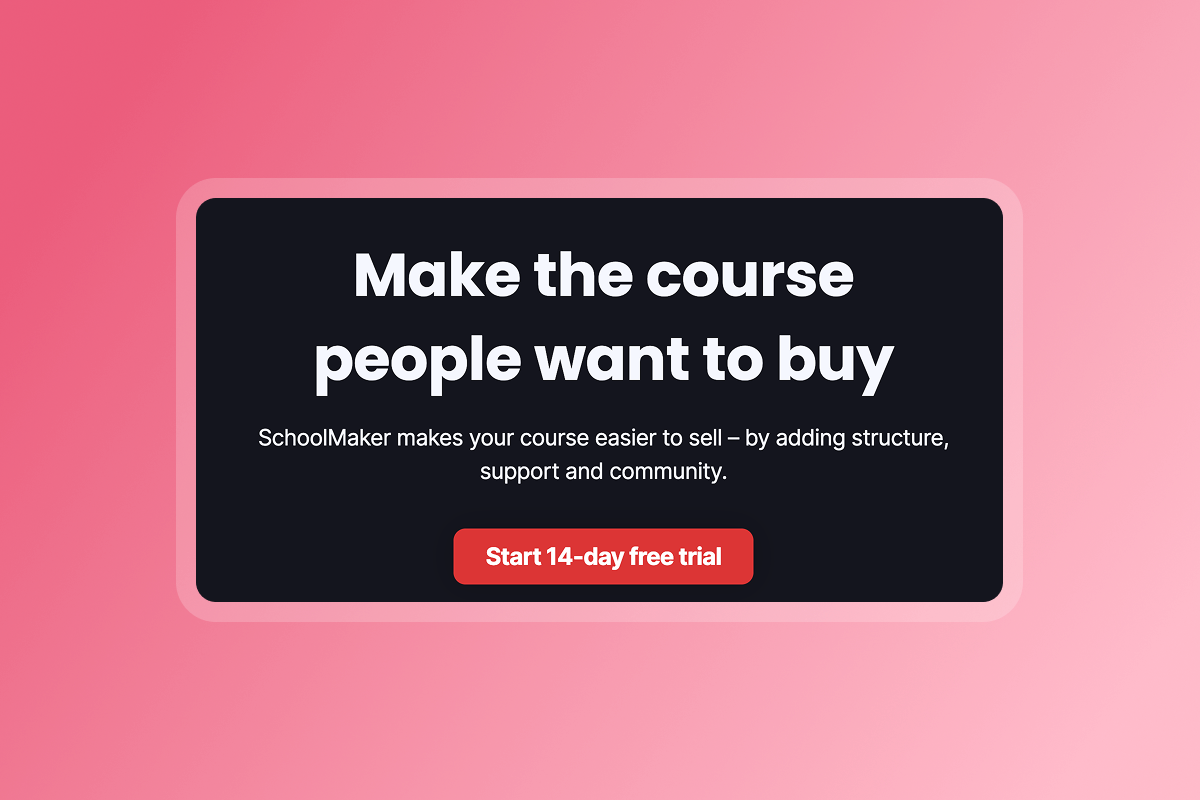
SchoolMaker supports cohorts, assignments, and blended learning. It appeals to creators who run structured programs with feedback loops.
- Strengths: Cohort and coaching flows with progress visibility.
- Trade-offs to check: Confirm native mobile app options, submission steps, and timelines for branded mobile delivery if critical to your model.
- Fit: Programs that prioritize structured feedback and coaching.
Other notable alternatives (Teachable, Podia, LearnWorlds, Uscreen)
- Teachable and Podia: Web-first course platforms with simple checkout and lightweight communities. Good for early-stage testing or smaller budgets. Validate mobile options if push is required.
- LearnWorlds: Feature-rich LMS with interactive video and assessments on web. Strong for academic style or corporate training. Mobile options require review.
- Uscreen: Video-first with OTT and TV apps. Excellent for VOD catalogs and live video across screens. If you need course plus community, verify how OTT aligns with your engagement model.
Comparison table: Passion vs key alternatives
Use this table to gauge platform fit for mobile engagement and community. Notes reflect what matters for coaches comparing app-centric delivery.
Pricing and total cost of ownership (TCO) comparison
Plan price alone is not the full cost. Add Apple and Google developer programs, payment fees, and IAP tolls. Model your 12 and 36 month costs.
Passion.io pricing tiers and fees
- Launch: $99/mo on annual billing, $119/mo if billed monthly.
- Scale: $239/mo on annual billing, $299/mo if billed monthly.
- Expand: $599/mo on annual billing, $699/mo if billed monthly.
- Passion Plus: Custom, done-for-you scope. Public roundups mention five figures depending on deliverables. Confirm with sales.
Alternative platform pricing and hidden costs
Expect a mix of:
- Platform plan: Monthly plans with annual discounts. Advanced automations or communities can sit on higher tiers.
- Payment fees: On-platform checkout and processor fees affect margin.
- Add-ons: Email volume, page views, or video storage may be metered.
- Mobile: If a branded mobile app is not included, you may need higher tiers or a separate app service.
Calculating your true TCO
- Year 1 fixed: Platform plan plus Apple 99 dollars and Google 25 dollars, plus migration time.
- Per sale: Compare web versus mobile margin.
- Scale effects: Annual plans and upsells reduce average fees. Heavy reliance on mobile IAP increases average fees.
Build a simple 12 and 36 month model with three offers: monthly, annual, and a one-time challenge. This shows breakeven and upgrade paths.
Pricing and TCO table
Use this quick table to scope year one costs for a mobile-first launch. Replace the sample plan with your actual plan.
Success stories from fitness coaches
Calxthenics by Adam Frater
After investing in custom development, he relaunched on Passion.io and grew recurring revenue with lower overhead. This illustrates reduced TCO and stronger mobile engagement. Browse the case studies collection.
Cirque Plus
Aerial arts training with consistent subscription revenue and strong in-app engagement, showing that niche skills thrive with push and community, as shown in the same case studies.
These align with what your coaching business need most: mobile-first engagement, clear payment paths, and a builder that is simple to ship.
Expert tips for monetizing fitness content
Price ladder: Offer monthly and annual tiers. Anchor with an annual plan that includes a bonus program or challenge replay.
Push cadence: Plan two nudges per week tied to milestones. Measure logins and lesson completion after each push.
Challenges work: Run a 30 day challenge with daily checkpoints. Target a 15 to 30 percent completion lift over 90 days based on case patterns.
Payment mix: Route core bundles to web checkout for margin. Offer IAP for convenience purchases and mobile upsells.
Upsells: Use progress triggers to offer a next step program or a 1:1 upgrade inside the app.
Choosing your best fit: Recommendations for specific situations
Best for scaling solopreneurs
Pick a platform with a no-code builder, templates, and App Store submission support. Passion.io pairs speed with training and push-driven engagement. See user feedback in a G2 review by Priscilla S..
Best for premium content publishers
If your content is video-heavy and you want OTT distribution, evaluate a video-first platform. If course plus community is central, Passion.io offers native mobile with offline playback and in-app community, explained on the app monetization page.
Best for niche community builders
If your core product is the community with events and discovery, Mighty Networks offers deep community structure and monetization. Confirm your need for a branded mobile app and factor in tiers, as creators discuss in a G2 review.
Best for fitness and wellness entrepreneurs
If you run programs, challenges, and memberships where push and habit loops matter, choose a platform that delivers a branded native app with in-app community and flexible subscriptions. Passion.io is purpose-built for this use case, with examples across fitness and wellness in the case studies.
How to launch a branded fitness app in 30 days
Materials: 10 core lessons, 2 bonuses, logo and colors, pricing for monthly and annual, Apple and Google accounts.
Estimated time: 30 days to web app live and submissions started. App Store approvals vary.
Steps:
- Week 1. Open Apple and Google developer accounts. Upload branding. Pick a template. Create your navigation and community channels.
- Week 1. Configure offers. Monthly and annual plans plus a one-time 30 day challenge. Decide which offers use web checkout versus IAP.
- Week 2. Upload lessons. Add intro videos, timers, and progress checkpoints. Turn on offline playback where needed.
- Week 2. Set push schedule. Two nudges per week for onboarding and challenge milestones.
- Week 3. Connect payments. Turn on PassionPayments for web and configure IAP for mobile. Test both flows.
- Week 3. Submit listings. Prepare screenshots and copy. Submit iOS and Android.
- Week 4. Run a beta. Onboard your first 25 to 50 members on web and continue mobile onboarding as listings go live.
- Week 4. Measure. Watch DAU and MAU, completion, and upgrade rates. Plan your first in-app upsell.
Acceptance criteria: Web app live. App Store submissions underway. First 25 paying members onboarded. Push cadence running.
Own your audience, scale your passion
If your clients live on their phones, your business should too. A branded native app with push, in-app community, and flexible monetization can turn launch spikes into recurring revenue. Passion.io combines a no-code app with the training to ship fast.
Get started with Passion today - there's a 30-day money-back guarantee to ensure your success.
Frequently Asked Questions
Do I need Apple and Google developer accounts to publish my app?
Yes. Apple is 99 dollars per year. Google Play is 25 dollars one time. Plan this in Week 1 to avoid delays. See the Apple Developer Program and Google Play Console.
What fees apply to web checkout versus in-app purchases?
Web checkout via PassionPayments adds a 3.9 percent platform fee plus Stripe processing. In-app purchases pay 15 to 30 percent to Apple or Google. Choose based on margin versus convenience. See the BloggingLift overview.
How fast can I launch a branded app?
Plan 4 weeks to get your web app live and submissions underway. iOS and Android approvals vary. Add a 1 to 2 week buffer for review.
How much does Passion.io cost?
Launch: $99/mo, Scale: $239/mo, Expand: $599/mo, Passion Plus is custom.
What push cadence improves completion?
Two nudges per week tied to milestones works for many programs. Combine with a 30 day challenge.
Is there a money-back guarantee?
Yes, a 30 day money-back guarantee is widely advertised.





